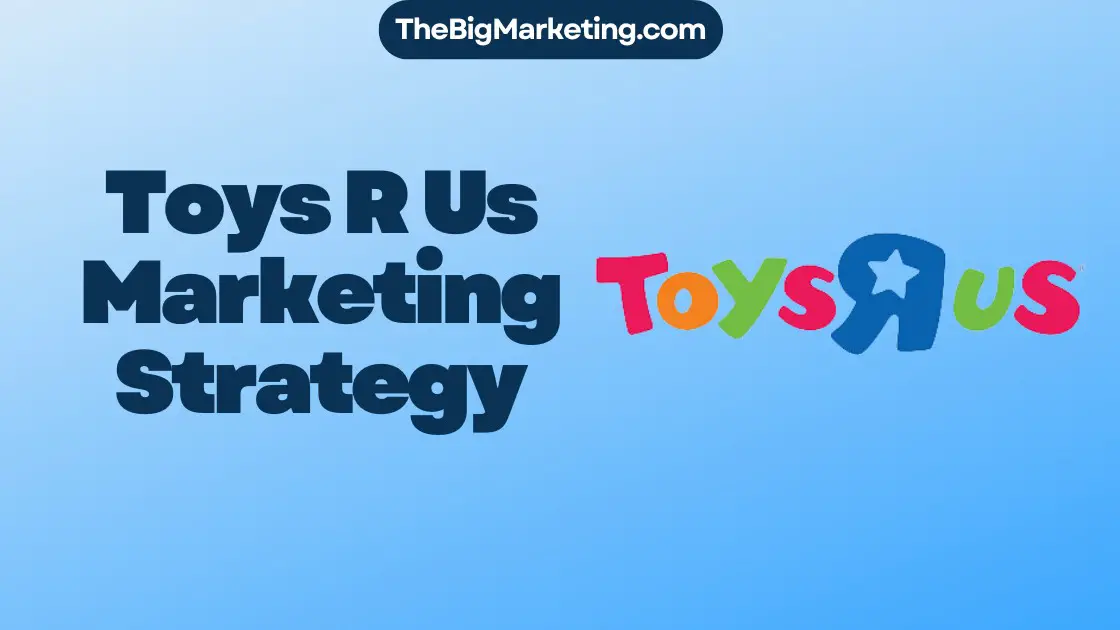Welcome to our in-depth analysis of HTC’s marketing strategy in 2024, where we examine the company’s approach to digital marketing, brand promotion, and advertising tactics. HTC, a renowned brand in the smartphone industry, has made significant efforts to establish a strong online presence and position itself effectively in the market. In this case study, we explore HTC’s unique selling proposition, competitive analysis, and the impact of its marketing campaigns. Join us as we delve into the world of HTC’s marketing strategy and discover the key insights that have shaped its success.
Key Takeaways:
- HTC has implemented a robust digital marketing strategy to enhance its brand promotion and online presence.
- The company’s marketing campaigns are designed to position HTC as a competitive player in the smartphone market.
- Understanding HTC’s unique selling proposition is essential to appreciate its market positioning and competitive advantage.
- A comprehensive analysis of HTC’s competitors provides valuable insights into the company’s marketing approach and opportunities for improvement.
- By examining HTC’s marketing strategy, we can gain valuable insights into the evolving landscape of the smartphone industry.
Stay tuned for our detailed exploration of the challenges, best practices, and solutions in HTC’s marketing strategy, as well as the importance of effective marketing communication and crafting a compelling unique selling proposition. Let’s uncover the secrets behind HTC’s success and discover how these insights can shape your own marketing strategies.
Challenges and Solutions in HTC Marketing Strategy
Implementing an effective marketing strategy is not without its challenges. HTC faces several hurdles in their marketing efforts that require strategic solutions. These challenges include weak brand value in the US market, limited experience in marketing and inventory management, targeting a niche segment of the market, and a lack of economies of scale.
To overcome these challenges, HTC has developed specific solutions that leverage their core competencies and enhance their brand value:
- Promoting Brand Image: HTC recognizes the importance of brand value in the highly competitive market. By investing in brand-building activities, such as sponsorship and partnerships, HTC aims to strengthen its brand perception and increase its market share.
- Developing the Marketing Mix: HTC is focusing on developing a comprehensive marketing mix that aligns with their target market’s preferences and demands. This includes product, price, promotion, and distribution strategies that effectively communicate the unique value proposition of HTC products.
- Improving Inventory Management: HTC acknowledges the significance of effective inventory management to optimize costs and meet customer demand. By implementing efficient supply chain systems and forecasting techniques, HTC aims to minimize stockouts and reduce excess inventory.
- Simplifying Physical Specifications: HTC has identified the need to streamline its product offerings to cater to a wider consumer base. Simplifying physical specifications, while still delivering innovative features, helps HTC appeal to a larger customer segment and enhances market penetration.
- Emphasizing Use of Common Components: HTC recognizes the importance of cost efficiency while maintaining product quality. By emphasizing the use of common components across their product range, HTC can reduce manufacturing costs, improve economies of scale, and ensure consistent quality standards.
Implementing these solutions will help HTC overcome their marketing challenges, enhance brand value, refine their marketing mix, improve inventory management, and streamline their product offerings. By addressing these obstacles, HTC can position itself as a stronger competitor in the ever-evolving smartphone market.
Best Practices in HTC Marketing Strategy
HTC has implemented several best practices in its marketing strategy to enhance its competitive edge and drive success in the smartphone industry. These practices encompass various aspects of the company’s operations, including product development, manufacturing, partnership collaborations, and organizational agility.
Planned Obsolescence
One of the key best practices observed in HTC’s marketing strategy is the implementation of planned obsolescence. By intentionally shortening the product life cycles, HTC creates a sense of urgency and encourages customers to upgrade to newer models. This approach helps the company stay ahead of market trends and maintain a steady stream of revenue.
Establishment of a Manufacturing Facility
HTC’s decision to establish its own manufacturing facility has proven to be a strategic move. This facility allows the company to have better control over the production process, reduce costs, and ensure timely delivery of high-quality products to the market. With a dedicated manufacturing facility, HTC can effectively compete with other smartphone manufacturers in terms of price and product availability.
Investment in Research and Development
HTC’s significant R&D investment plays a crucial role in its marketing strategy. By continuously investing in research and development, the company stays at the forefront of technological advancements and innovation. This allows HTC to introduce cutting-edge features and functionalities in its products, attracting tech-savvy consumers and differentiating itself from competitors in the market.
Customized Products for Operators
Another best practice observed in HTC’s marketing strategy is the development of customized products for various operators. By tailoring its offerings to meet the unique requirements and preferences of telecom operators, HTC strengthens its relationships with these key stakeholders and enhances its market presence. Customized products help HTC to stand out in a competitive marketplace and generate customer loyalty.
Promotion of Open Source Technologies
HTC’s commitment to open source technologies is evident in its marketing strategy. By embracing open source platforms like Android, HTC gains access to a vast ecosystem of applications and software development communities. This allows the company to offer a diverse and innovative range of products that appeal to tech enthusiasts and developers.
Collaboration with Major Competitors
HTC recognizes the importance of maintaining healthy relationships with major competitors like Google and Microsoft. By collaborating and partnering with industry leaders, HTC benefits from shared resources, expertise, and market insights. This collaboration enables HTC to navigate rapidly changing market dynamics and stay relevant in the competitive landscape.
Quick and Nimble Organization
HTC’s quick and nimble organization is a crucial component of its marketing strategy. By maintaining agility and responsiveness, HTC can adapt to market trends, consumer demands, and emerging technologies swiftly. This allows the company to capitalize on opportunities, address challenges, and maintain its competitive edge in the ever-evolving smartphone industry.
| Best Practices | Description |
|---|---|
| Planned Obsolescence | Implementing short product life cycles to drive customer upgrades and maintain revenue. |
| Establishment of a Manufacturing Facility | Setting up a dedicated manufacturing facility to control production, reduce costs, and ensure product availability. |
| Investment in Research and Development | Significant investment in R&D to stay ahead in technological advancements and introduce innovative features. |
| Customized Products for Operators | Developing tailored products to meet the unique requirements of telecom operators, strengthening relationships and generating customer loyalty. |
| Promotion of Open Source Technologies | Embracing open source platforms to offer a diverse range of products and leverage the benefits of a vibrant software development community. |
| Collaboration with Major Competitors | Maintaining healthy relationships with major competitors to leverage shared resources, expertise, and market insights. |
| Quick and Nimble Organization | Maintaining agility and responsiveness to adapt to market changes and capitalize on emerging opportunities. |
HTC Marketing Strategy Problems
Despite its innovative approach, HTC’s marketing strategy encounters several challenges that affect its market positioning and success in the smartphone industry.
High R&D Cost
The company faces high research and development costs, which put a strain on its resources and affect its ability to invest in other critical areas of its marketing strategy.
High Pricing
HTC’s products are often priced higher than those of its competitors, making it less competitive in price-sensitive markets and limiting its customer base.
Late Entry as Own Brand
HTC entered the smartphone market as its own brand relatively late, missing out on the early stages of industry growth and allowing other brands to establish a stronger presence.
Lesser-Known Brand Name
The HTC brand name is less recognized compared to its major competitors, making it more challenging to attract customers and differentiate itself in a highly competitive market.
Prosumer Market Focus
The company has predominantly focused on the prosumer market, neglecting potential opportunities in other market segments and limiting its overall market reach.
Short Product Lifecycle
HTC’s products have relatively short lifecycles, which means they become quickly outdated and lose their appeal in a rapidly evolving market.
Warranty Risk
Issues related to warranty and customer support pose a risk to HTC’s reputation, as poor customer experiences can negatively impact brand loyalty and future sales.
Lack of App Store
Unlike its competitors, HTC lacks its own app store, which limits its ability to attract app developers and provide a seamless user experience for its customers.
To overcome these challenges, HTC needs to develop effective strategies that address these issues and allow the company to compete effectively in the dynamic smartphone market.
Solutions for HTC Marketing Strategy Problems
To address the problems in its marketing strategy, HTC should consider implementing the following solutions:
- R&D cost reduction: By optimizing research and development processes and streamlining resource allocation, HTC can reduce R&D costs to a sustainable level.
- Early own brand introduction: Introducing its own brand earlier will enable HTC to establish a stronger and more recognizable presence in the market.
- Market segmentation: Adopting appropriate market segmentation strategies will allow HTC to target specific customer groups more effectively and tailor its marketing efforts accordingly.
- Longer product lifecycle: Extending the product lifecycle will not only reduce development and production costs but also provide customers with a longer period to enjoy their HTC devices.
- Development of own app store: By developing its own app store, HTC can enhance the user experience and offer unique features and content, attracting a larger customer base.
Implementing these solutions will help HTC improve its competitive advantage, reduce costs, strengthen brand positioning, and appeal to a wider customer base.
Benefits of the Solutions
The implemented solutions bring several benefits to HTC:
- Improved cost efficiency through reduced R&D expenses and streamlined processes.
- Increased brand recognition and market penetration through earlier establishment of the own brand.
- Enhanced customer targeting and personalized marketing efforts through effective market segmentation.
- Lowered production costs and increased customer satisfaction through longer product lifecycles.
- Enhanced user experience, exclusive content, and increased customer loyalty through the development of an own app store.
By addressing these marketing challenges and implementing the suggested solutions, HTC can position itself for long-term success in the ever-evolving smartphone industry.
Comparison of HTC’s Marketing Strategy Problems and Solutions
| Problems | Solutions |
|---|---|
| High R&D cost | R&D cost reduction |
| Late entry as own brand | Early own brand introduction |
| Lesser-known brand name | |
| Prosumer market focus | Market segmentation |
| Short product lifecycle | Longer product lifecycle |
| Warranty risk | |
| Lack of app store | Development of own app store |
HTC Marketing Strategy Best Practices
HTC has established itself as a leader in the mobile industry through its innovative marketing strategy and best practices. By leveraging innovation through collaboration and embracing emerging technologies, the company has consistently pushed boundaries and delivered pioneering products that have shaped the industry.
One of HTC’s notable achievements was being the first company to introduce touch technology to the world. This breakthrough innovation revolutionized user interaction with mobile devices and set a new standard for the industry. Through this forward-thinking approach, HTC demonstrated its commitment to creating intuitive and engaging experiences for its customers.
In addition to technological advancements, HTC successfully made the transition from an original design manufacturer (ODM) to a mobile company with its own brand. This strategic move allowed HTC to establish a direct connection with its customers and nurture brand loyalty. By controlling the entire product lifecycle, from design to marketing, HTC was able to create unique offerings that resonated with consumers.
HTC’s commitment to innovation and market leadership is further evident in its history of pioneering products. The company introduced the world’s first commercially available 4G smartphone, showcasing its ability to anticipate and capitalize on emerging trends. Additionally, HTC was an early adopter of the Android operating system, launching the first Android smartphone. These groundbreaking devices not only demonstrated HTC’s technological prowess but also positioned the company as a true innovator in the industry.
Overall, HTC’s marketing strategy best practices, characterized by innovation through collaboration, touch technology, successful transition from ODM to mobile company, and pioneering products, have played a pivotal role in establishing the brand as a leader in the mobile industry. By constantly pushing boundaries and striving for excellence, HTC has set a benchmark for innovation and customer-centricity that continues to drive its success.
Importance of Effective Marketing Communication
Effective marketing communication plays a vital role in HTC’s overall success. Despite having innovative products, the company has faced challenges due to a poor approach to marketing. To overcome these challenges and establish a strong market presence, HTC needs to focus on value communication, targeting the right audience, creating a well-defined marketing plan, and utilizing the power of innovation storytelling.
Value Communication and Building Brand Image
One of the key aspects of effective marketing communication is clearly conveying the value of HTC products to the target audience. By highlighting the unique features, benefits, and competitive advantages of their products, HTC can create awareness and capture the attention of potential customers. This value communication should be consistent across all marketing channels, whether it’s through online ads, social media campaigns, or traditional print advertisements.
In addition to value communication, HTC needs to focus on building a strong brand image through effective marketing communication. This includes emphasizing the qualities that set HTC apart from its competitors, such as quality, reliability, and innovation. By consistently reinforcing these brand attributes through marketing messages, HTC can differentiate itself in the market and establish a favorable perception among consumers.
Target Audience and Marketing Plan
A well-defined target audience is a crucial component of successful marketing communication. HTC should conduct thorough market research to identify their ideal customers, understand their needs and preferences, and tailor their marketing messages accordingly. By precisely targeting the right audience, HTC can ensure that their marketing efforts are reaching the people who are most likely to be interested in their products.
Furthermore, HTC should develop a comprehensive marketing plan that outlines their goals, strategies, and tactics. This plan should incorporate various marketing channels, including digital marketing, social media, content marketing, and traditional advertising. By carefully planning and executing their marketing activities, HTC can maximize their reach and impact, effectively engaging with their target audience.
Innovation Storytelling and Emotional Connection
Innovation storytelling is a powerful tool that can help HTC create an emotional connection with consumers. By effectively telling the story of their product innovation, HTC can captivate their audience, generate excitement, and build a loyal customer base. This storytelling approach should focus on how HTC’s products solve customer challenges, improve daily life, and provide unique experiences. By highlighting the emotional benefits and demonstrating the real-life impact of their products, HTC can establish a strong connection with consumers, driving brand loyalty and advocacy.
To facilitate effective marketing communication, HTC should enhance their online presence through an engaging website, active social media profiles, and interactive content. They can also leverage influencer partnerships and user-generated content to amplify their messaging.
In conclusion, effective marketing communication is vital for HTC to achieve success in the competitive smartphone industry. By conveying the value of their products, targeting the right audience, implementing a well-defined marketing plan, and leveraging innovation storytelling, HTC can create awareness, build a strong brand image, and establish a competitive edge in the market.
Creative Marketing Strategies for HTC
To stand out in the market, HTC can employ creative marketing strategies that seamlessly fuse online and offline channels. By leveraging the success of Samsung’s virtual line for a new product launch, HTC can generate significant organic engagement and reach. By exploring similar approaches, HTC can effectively connect with its target audience, maximizing brand exposure and customer engagement.
Integrating online and offline marketing techniques allows HTC to create a seamless fusion of digital and traditional channels. By leveraging the power of digital platforms, such as social media advertising and influencer partnerships, HTC can engage with a wide audience online. At the same time, offline marketing strategies, such as experiential events and retail activations, provide opportunities for in-person interactions and product demonstrations.
This holistic approach creates a unique and immersive brand experience, capturing the attention of consumers both online and offline. By embracing innovative marketing strategies, HTC can stand out from its competitors and effectively communicate its brand message.
One example of creative marketing is the integration of online and offline campaigns. For instance, HTC could launch a digital teaser campaign to generate pre-launch excitement and anticipation. The campaign could include interactive social media posts, virtual reality experiences, and live streaming events. This online engagement can then be followed by offline activities, such as exclusive pop-up stores, product demonstrations, and hands-on experiences.
By seamlessly fusing these marketing channels, HTC can create a cohesive and memorable brand experience for its audience. This approach not only captivates consumers but also enhances brand visibility and recognition.
Key Points:
- Integrate online and offline marketing techniques for a seamless brand experience.
- Embrace innovative strategies to stand out from competitors.
- Use online campaigns to generate excitement and anticipation.
- Follow up with offline activities for hands-on experiences.
- Capture attention and enhance brand visibility and recognition.
Clear Positioning and Naming Strategy
HTC’s marketing strategy can greatly benefit from implementing a clear positioning and naming strategy. In the past, the use of quirky names for its smartphones created confusion among consumers and hindered marketing efforts. By adopting a consistent naming model and clearly defining its product offerings, HTC can enhance marketing clarity and improve customer recognition and understanding of its products. This will contribute to a stronger and more cohesive branding approach, ultimately leading to increased customer conversion and market competitiveness.
The Power of Clear Offerings
When it comes to marketing, having clear offerings is essential. HTC can achieve this by clearly articulating the features, benefits, and value of its products to customers. By presenting a concise and compelling value proposition, HTC can effectively communicate why its products are unique and valuable, ultimately driving customer interest and loyalty.
Optimizing Product Naming
The naming of products plays a crucial role in shaping brand perception and consumer understanding. By adopting a consistent and intuitive naming strategy, HTC can ensure that its products have easily recognizable and memorable names. This not only reduces confusion but also helps customers make informed purchasing decisions. Consistent product naming also creates a cohesive brand identity and enhances marketing clarity, enabling HTC to stand out in a competitive market.
The Importance of Consistent Branding
Consistent branding is key to building a strong and recognizable brand image. HTC can achieve this by maintaining consistent visual elements, messaging, and tone across all marketing channels. This consistency helps establish brand recognition, builds trust with customers, and reinforces HTC’s positioning in the market. By presenting a cohesive and unified brand experience, HTC can differentiate itself from competitors and create a lasting impression in the minds of its target audience.
Crafting Marketing Clarity
Marketing clarity is the foundation of effective communication with customers. HTC can achieve marketing clarity by clearly conveying the value proposition, features, and benefits of its products through various marketing channels. This involves aligning marketing messages with customer needs and preferences, using clear and concise language, and utilizing visual elements to enhance understanding. By focusing on marketing clarity, HTC can ensure that its messaging resonates with customers and drives favorable purchasing decisions.
A clear positioning and naming strategy is imperative for HTC to optimize its marketing efforts. Through clear offerings, a well-defined product naming strategy, consistent branding, and marketing clarity, HTC can enhance its brand recognition, increase customer understanding of its products, and ultimately achieve greater success in the competitive smartphone market.
Crafting an Effective Unique Selling Proposition (USP)
In order to succeed in HTC’s marketing strategy, it is crucial to develop and communicate a strong unique selling proposition (USP). A USP is what sets the company apart from its competitors and creates a competitive advantage in the market. By identifying and highlighting the unique benefits and value proposition that HTC offers, the company can differentiate itself, attract its target customers, and build a loyal customer base.
The first step in crafting an effective USP is to identify HTC’s competitive advantages. This involves thoroughly analyzing the market and understanding how HTC stands out from its competitors. By assessing factors such as product offerings, technology, customer service, and brand reputation, HTC can determine its key strengths and advantages in the industry.
Once the competitive advantages have been identified, the next step is to highlight the value proposition that HTC offers to its customers. The value proposition is the unique and compelling benefits that customers can expect from HTC’s products and services. Whether it’s innovative features, superior performance, exceptional customer support, or customization options, HTC needs to communicate these benefits clearly and effectively.
By effectively communicating the specific benefits that customers can derive from choosing HTC over its competitors, the company can create a strong market differentiation. Customers need to understand how HTC’s products or services will fulfill their needs better than any other option available to them. This requires clear and concise messaging that resonates with the target audience and creates a sense of value and desire.
Crafting an effective USP not only helps HTC differentiate itself in the market, but it also provides a competitive advantage. By clearly communicating the unique benefits and value proposition that HTC offers, the company can attract customers who are specifically seeking those features. This targeted approach allows HTC to focus on its strengths and create a niche within the market.
In conclusion, developing an effective USP is a critical component of HTC’s marketing strategy. By identifying competitive advantages, highlighting the value proposition, and communicating specific customer benefits, HTC can differentiate itself, appeal to target customers, and gain a competitive edge in the market.
Competitive Analysis of HTC’s Marketing Strategy
A comprehensive competitive analysis is essential to evaluate HTC’s marketing strategy. By thoroughly analyzing the company’s key competitors, conducting a market share analysis, assessing brand positioning, and performing a SWOT analysis, HTC can gain valuable insights into the market landscape and identify opportunities to improve its marketing approach.
Understanding the competitive landscape is crucial for HTC to make informed decisions and develop effective strategies that will give them a competitive edge. By studying their competitors’ marketing activities, product offerings, and market positioning, HTC can identify gaps, leverage their strengths, and capitalize on untapped opportunities.
HTC Competitors
HTC faces competition from major players in the smartphone industry such as Samsung, Apple, Huawei, and Xiaomi. These companies have significant market presence and have established strong brand identities that appeal to consumers worldwide. By analyzing their competitors, HTC can benchmark their own marketing efforts and identify areas where they can differentiate themselves.
Market Share Analysis
Conducting a market share analysis will provide HTC with valuable insights on how they are performing relative to their competitors. This analysis involves examining the company’s market share compared to its rivals, understanding the factors that contribute to their market position, and identifying growth opportunities in specific market segments.
Brand Positioning
Assessing brand positioning is crucial for HTC to understand how they are perceived in the market and how they can improve their brand image. By evaluating their competitors’ brand positioning strategies, HTC can identify gaps in the market and develop a unique value proposition that sets them apart.
SWOT Analysis
Conducting a SWOT (Strengths, Weaknesses, Opportunities, and Threats) analysis will help HTC gain a deeper understanding of their internal and external factors that impact their marketing strategy. This analysis will highlight HTC’s strengths that can be leveraged, weaknesses that need to be addressed, opportunities that can be pursued, and threats that pose potential challenges.
A comprehensive competitive analysis, encompassing HTC’s competitors, market share analysis, brand positioning, and SWOT analysis, will provide the company with valuable insights to refine their marketing strategy, build a stronger brand, and drive their success in the highly competitive smartphone industry.
Conclusion
The HTC Marketing Strategy for 2024 demonstrates the company’s commitment to innovative brand promotions and digital campaigns that shape the ever-evolving tech landscape. By addressing challenges, implementing effective solutions, leveraging best practices, and adopting creative marketing strategies, HTC can position itself as a formidable competitor in the smartphone industry.
With a clear positioning and a compelling unique selling proposition, HTC can differentiate itself and attract customers in a crowded market. Additionally, the focus on effective marketing communication will enable the company to clearly communicate its value to the target audience and build a strong brand image.
In a rapidly changing tech landscape, HTC’s commitment to staying ahead of the curve through innovative marketing strategies will be crucial. By embracing new technologies, exploring creative marketing channels, and continuously adapting to consumer needs, HTC can thrive in the competitive smartphone industry and achieve long-term success.





